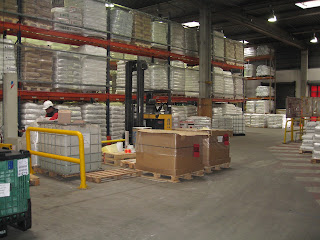Mobile Warehousing: Revolutionizing Warehouse Operations
Introduction:
In today's rapidly evolving business landscape, where agility and flexibility are paramount, mobile warehousing has emerged as a game-changer in optimizing warehouse operations. By leveraging mobile technology and innovative solutions, businesses can achieve increased efficiency, real-time visibility, and improved customer satisfaction. In this comprehensive guide, we will explore the concept of mobile warehousing and its transformative impact on warehouse operations.
I. What is Mobile Warehousing?
Definition:
Mobile warehousing refers to the use of mobile devices, such as smartphones, tablets, and wearable technology, along with dedicated mobile applications, to streamline and enhance various warehouse processes. It allows for seamless communication, data collection, and decision-making on the go, empowering warehouse personnel to perform tasks efficiently and accurately.
Key Components:
Mobile warehousing encompasses the following key components:
Mobile Devices: Smartphones, tablets, wearables, or rugged handheld devices equipped with wireless connectivity and barcode scanning capabilities.
Mobile Applications: Customized or off-the-shelf applications that enable inventory management, order processing, picking, packing, shipping, and other warehouse activities.
Integration: Integration of mobile applications with existing warehouse management systems (WMS), enterprise resource planning (ERP) systems, and other relevant software for real-time data synchronization.
II. Benefits of Mobile Warehousing
Enhanced Productivity:
Mobile warehousing enables warehouse personnel to access critical information, perform tasks, and communicate seamlessly while on the warehouse floor. This results in improved productivity, reduced manual errors, and faster decision-making.
Real-Time Visibility:
With mobile devices and applications, warehouse managers can have real-time visibility into inventory levels, order status, and overall warehouse performance. This empowers them to make data-driven decisions, optimize resource allocation, and proactively address any bottlenecks or issues.
Accurate Data Capture:
Mobile devices equipped with barcode scanning capabilities ensure accurate and efficient data capture during receiving, picking, packing, and shipping processes. This minimizes manual data entry errors, improves inventory accuracy, and enhances order fulfillment.
Streamlined Workflows:
Mobile applications enable streamlined workflows by providing step-by-step instructions, task prioritization, and route optimization for warehouse personnel. This ensures that warehouse operations are executed in the most efficient and systematic manner.
Improved Customer Service:
Real-time access to accurate inventory information allows warehouse personnel to provide accurate order status updates to customers. This enhances transparency, reduces order inquiries, and improves overall customer satisfaction.
Scalability and Flexibility:
Mobile warehousing solutions are highly scalable and adaptable, allowing businesses to easily expand their operations, integrate new features, and accommodate changing business needs. It provides the flexibility to customize applications and workflows based on specific requirements.
III. Implementing Mobile Warehousing: Best Practices
Assess Requirements:
Identify the specific pain points, challenges, and requirements of your warehouse operations. Determine the key functionalities and features you need from a mobile warehousing solution to address these needs effectively.
Choose the Right Solution:
Evaluate different mobile warehousing solutions based on factors such as compatibility with existing systems, ease of use, scalability, and vendor reputation. Select a solution that aligns with your specific business requirements and provides the necessary functionality.
Training and Change Management:
Invest in comprehensive training programs to ensure that warehouse personnel are proficient in using the mobile devices and applications. Implement change management strategies to facilitate a smooth transition to mobile warehousing.
Security and Data Protection:
Implement robust security measures to protect sensitive warehouse data accessed through mobile devices. This includes secure login credentials, data encryption, regular backups, and security protocols to mitigate potential risks.
Continuous Evaluation and Improvement:
Regularly assess the effectiveness of your mobile warehousing solution through performance metrics, user feedback, and operational analysis. Continuously optimize workflows, address any issues, and leverage new features or advancements in mobile technology.
Conclusion:
Mobile warehousing represents a transformative shift in warehouse operations, empowering businesses with increased efficiency, real-time visibility, and improved customer satisfaction. By embracing mobile devices and applications, companies can streamline processes, enhance productivity, and stay ahead in today's competitive landscape.




Comments
Post a Comment